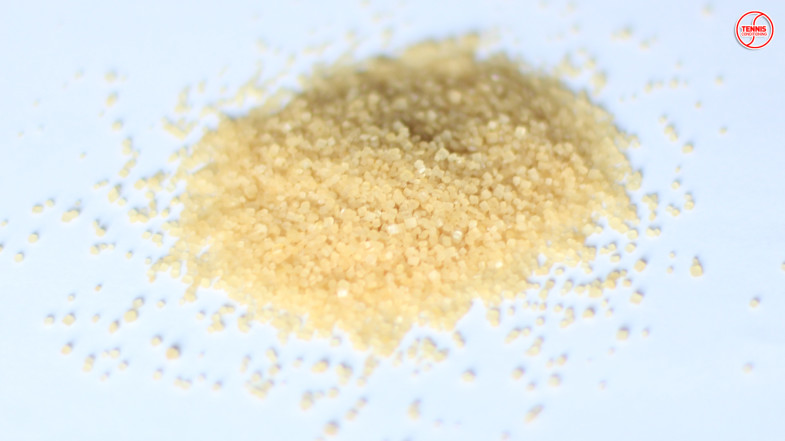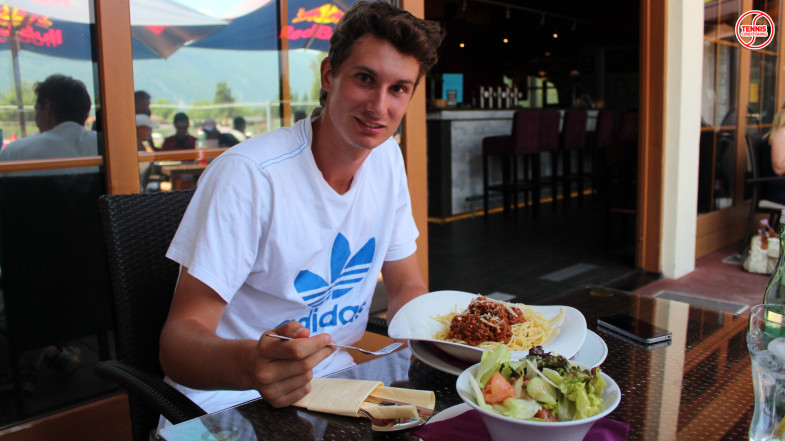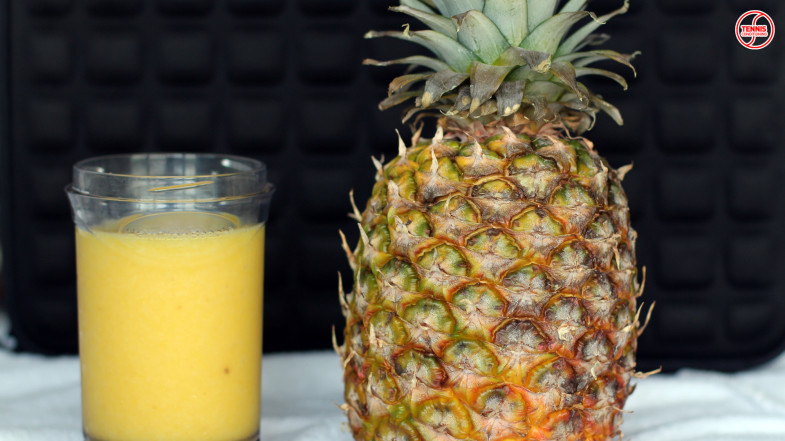Carbohydrates are the body’s preferred source of energy during a tennis match. They play different roles depending on their form.
Carbohydrates are the ideal form of energy during anaerobic metabolism (short duration/high intensity activities; e.g. 100m sprint).
At the molecular level a carbohydrate atom consists of:
- 6 carbon (C) molecules
- 12 hydrogen (H) molecules
- 6 oxygen (O) molecules
Therefore, carbohydrates are also referred to as CHO.
There are three forms of carbohydrates and they are categorized based on the length of the carbohydrate molecules.
Simple Carbohydrates

The prefix “mono” means “one or single” and “saccharide” is a synonym for “sugar”, so a monosaccharide is one single sugar, also referred to as simple sugar.
The prefix “di” refers to “two, twice or double”. Therefore disaccharides are the combination of 2 monosaccharide and hence also referred to as simple sugars.
If you think in terms of a chain of carbohydrates, monosaccharides and disaccharides have short chains that can easily be broken up.
Because the chains can be broken down easily, these simple sugars are quickly available to provide energy. On the other hand, they also don’t provide energy for a prolonged period of time.
Instead blood glucose levels can raise and fall rapidly, possibly causing a drop in performance due to hypoglycemia (low blood sugar levels).
Find out more how sports nutrition can impact your performance and how glucose breakdown provides energy.
- Monosaccharides (simple sugars: glucose & fructose)
- Glucose (= blood sugar)
- Fructose (the sweetest form; occurs naturally in honey)
- Galactose
- Disaccharides (2 monosaccharides)
- Maltose (= glucose + glucose): maltose is produced during starch (energy storage form in plants) breakdown (e.g. carbohydrate digestion)
- Sucrose (= glucose + fructose): regular table sugar
- Lactose (= glucose + galactose): lactose is the principle carbohydrate of milk; “milk sugar”
Complex Carbohydrates: Polysaccharides
The prefix “poly” comes from the Greek word “polus” and means “many or much”. Therefore polysaccharides are many monosaccharides combined to form a long chain, which takes longer to break it down.
Because polysaccharides are more complex, the breakdown of the chains takes longer and hence polysaccharides can provide energy at a steady pace for a longer period of time.
- Polysaccharides (also called complex carbohydrates)
- Glycogen: energy reserves in the body, composed of glucose
- Starches: energy reserves in plants, composed of glucose
- Fibers: provide little or no energy because their bonds can’t be broken by human enzymes, which means that they don’t contribute any energy to the body because they can’t be broken down into monosaccharides (glucose) but they can lower glucose levels (blood sugar)
Synthesis & Break Down of Carbohydrates
The catabolic chemical reaction that breaks down carbohydrates into smaller compounds is called hydrolysis.
On the other hand, the anabolic chemical reaction, where carbohydrates are put together to form a larger molecule, is called condensation.
- Hydrolysis (broken apart by water; a water molecule splits into H and OH)
- Condensation (synthesis of 2 monosaccharides)
Related Article & Videos
In this section we provide you with some more sports nutrition info you may be interested in to optimize your training. Have fun and happy training!






